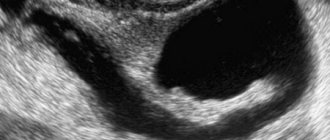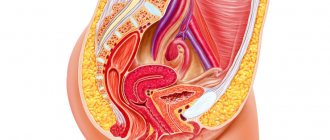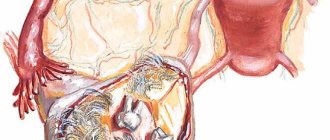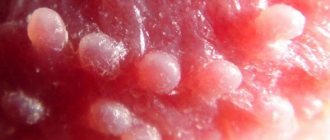Glomerulonephritis is a bilateral inflammatory pathology of the kidneys, accompanied by damage to small renal vessels. With the development of this disease, there is a disruption in the main work of this organ: the formation of urine, cleansing the body of both toxic and unnecessary substances.
What kind of disease is this, what are the reasons for its development and the main symptoms, as well as what is prescribed as treatment for people with glomerulonephritis, and what diet to follow, we will consider further.
Glomerulonephritis: what is it?
Glomerulonephritis is a group of kidney diseases that have various clinical manifestations. However, with all the variety of symptoms, the result of untreated glomerulonephritis is the same: gradual or rapid formation of renal failure with the possible development of uremic coma.
In most cases, the development is caused by an excessive immune reaction of the body to antigens of an infectious nature. There is also an autoimmune form of glomeruloronephritis, in which kidney damage occurs as a result of the destructive effects of autoantibodies (antibodies to the body's own cells).
The disease has the following distinctive features:
- characterized by damage to the glomeruli and tubules;
- has an immunoinflammatory origin;
- progresses steadily;
- leads to the development of secondary arterial hypertension;
- affects predominantly young people;
- cannot be treated with antibiotics alone;
- occurs in acute and chronic forms.
Symptoms
The danger of glomerulonephritis lies in disorders of the renal glomeruli - glomeruli. This entails: weak glomerular filtration due to a decrease in its rate, the appearance of blood and protein in the urine, and a decrease in the volume of urination.
In adults, the disease occurs latently (hidden), changes in the quality and quantity of urine are possible. A blurred clinical picture, unnoticed by the patient, leads to a chronic form. If the disease has been diagnosed and drug therapy has been administered, the acute form can be cured in 2-3 months.
In children, the symptoms are striking, in 85% of cases there are disturbances in the vascular system and in the functioning of the heart.
Classification
According to the development mechanism there are:
- primary glomerulonephritis - the pathology in this case is distinguished as an independent disease;
- secondary type - the disease in question occurs against the background of other systemic pathologies (lupus erythematosus, rheumatoid arthritis, and others).
Acute renal glomerulonephritis
Acute glomerulonephritis - occurs for the first time and always suddenly, the course is rapid, ends with complete recovery, but can become chronic.
This pathology is characteristic of children from 2 to 12 years of age and adults up to 40. Men are slightly more susceptible. Humidity and cold contribute to its outbreaks. Infections such as pharyngitis and tonsillitis, as well as scarlet fever and erysipelas of the skin lead to complications in the kidneys.
Subacute (malignant) - rapidly progresses and is very difficult to treat with special means. 80% of cases are fatal.
Chronic course
The chronic course is an asymptomatic onset of the disease; pathological changes are often detected when renal failure has already developed. Long-term pathology leads to the replacement of nephrons with connective tissue.
The following variants of the course of chronic glomerulonephritis are distinguished:
- nephrotic (urinary symptoms predominate);
- hypertensive (increased blood pressure is noted, urinary syndrome is mild);
- mixed (combination of hypertensive and nephrotic syndromes);
- latent (a fairly common form, characterized by the absence of edema and arterial
- hypertension with mild nephrotic syndrome);
- hematuric (the presence of red blood cells in the urine is noted, other symptoms are absent or mild).
All forms of glomerulonephritis are characterized by a relapsing course. Clinical symptoms of exacerbation resemble or completely repeat the first episode of acute glomerulonephritis.
Causes of pathology
To cure the disease as quickly as possible, it is necessary to eliminate the causes. There are three main factors:
- infections;
- intoxication;
- hypothermia.
The more risk factors, the more likely you are to get sick.
It is possible to diagnose glomerulonephritis soon after infection with the following infections:
- group A beta hemolytic streptococcus;
- staphylococcus;
- Pneumococcus;
- toxoplasma;
- meningococcus
Note! Symptoms of glomerulonephritis develop 3 weeks after the initial infection.
Insect bites, work in hazardous industries, and alcohol overdose can cause toxic damage to the body. Sometimes the body may react negatively to the introduction of vaccination serum and certain medications.
If a child or adult becomes hypothermic, the blood vessels supplying the kidney become narrowed. This led to a deterioration in blood supply and, as a result, contributed to the development of glomerulonephritis.
Causes
The causes of the disease are previous infections - streptococcal, staphylococcal and other bacterial infections. In some cases, the etiological factor in the development of the disease may be hepatitis B and C, and possibly cytomegalovirus infection.
Glomerulonephritis can develop against the background of diseases of a parasitic nature, under the toxic effects of certain medications, or through the use of alcohol and drugs; these habits have a particularly strong influence in adolescence.
Microorganisms play a special role, and this applies not only to the previously isolated streptococcus, but also to staphylococcus, plasmodium malaria and some other types of viruses. Most often, the following diseases are identified as causes of the development of the disease:
- scarlet fever,
- sore throats,
- pneumonia,
- streptoderma (skin lesions of purulent type).
Also, the reasons contributing to the development of glomerulonephritis include:
- ARVI,
- chicken pox,
- measles.
In other words, the infectious factor of exposure is one of the main ones.
Risk factors:
- genetic predisposition;
- foci of chronic infection;
- hypovitaminosis;
- systemic diseases (lupus erythematosus, vasculitis);
- hypothermia;
- poisoning with toxic substances (alcohol, mercury, lead);
- vaccination and blood transfusion;
- radiation therapy.
Characteristic features of the chronic form of glomerulonephritis
Kidney pathologies have recently been increasingly diagnosed in people aged 20 to 40 years. The reason is environmental degradation and frequent self-medication with medications. One of the dangerous diseases is glomerulonephritis, which can be asymptomatic for a long time.
The chronic form of glomerulonephritis (according to ICD-10 code No. 03) is an immune complex disease, during which the renal glomeruli are affected and atrophy. Also included in the international class of nephritic syndrome are glomerular disease and nephritis. According to WHO, 10 out of 100 thousand people die from pathology.
Reasons for development
Glomerulonephritis is a complication of advanced viral or infectious diseases. Pathogenesis is caused by an aggressive reaction of the immune system to the pathogen. The absence or lack of treatment leads to damage to the kidneys, namely the nephron membrane. The main reasons for the development of pathology:
- sore throat, sinusitis, tonsillitis, pneumonia, ARVI;
- caries, periodontitis;
- herpes virus, hepatitis, chicken pox, measles, scarlet fever;
- poisoning of the body with alcohol or drugs;
- diphtheria;
- some medications, allergic reaction to vaccination.
It is important to know! Chronic glomerulonephritis occurs due to the action of pathogenic microorganisms, namely viruses, toxoplasma, Staphylococcus aureus. The most dangerous and common cause of infection is the proliferation of group A beta-hemolytic streptococcus.
Also, the kidneys suffer from frequent hypothermia, high humidity in the apartment or at work. The pathology can develop due to autoimmune diseases (systemic lupus) or be inherited.
Symptoms of pathology
The first stage of the disease (latent) is detected using laboratory diagnostics. Before examining urine, the patient may not suspect the presence of pathology. As chronic glomerulonephritis progresses, it has the following symptoms:
- urinary syndrome (proteinuria, hematuria, diuresis);
- dysfunction of urination (dysuria, oliguria, anuria);
- Pasternatsky's symptom (pain with slight rocking of the lower back);
- swelling of the face, hands, feet;
- sudden weight gain and then causeless weight loss;
- increased blood pressure;
- constant thirst, signs of intoxication;
- weakness, dizziness, lack of appetite;
- dyspnea;
- fever (rare).
The chronic course of the disease is characterized by a regular change of phases, the first is an exacerbation, during which nephritic or nephrotic syndrome appears, and the second is remission. A person can live without signs of the disease for many years (from 2 to 10 years), which will lead to dystrophic reduction of the kidneys, the development of renal failure and death.
Classification of chronic form
The disease can occur primarily when degenerative-dystrophic changes affect only the kidneys. Secondary pathology develops against the background of other autoimmune, viral, and inflammatory processes. Depending on the identified symptoms, chronic glomerulonephritis differs in clinical forms; their classification is given below:
- Latent. The mildest variant of the disease. A long-term advanced disease, the presence of which most patients do not suspect for 10 years or more. Pathology can be identified only after comprehensive tests and measurement of the volume of daily urine excreted.
- Hypertensive. It manifests itself as high blood pressure, which falls and rises throughout the day. There are blood clots in the urine. Also, a detailed examination reveals hypertrophy of the left ventricle of the heart and changes in the structure of the fundus.
- Hematuric. The volume of blood in the urine is so large that it turns it red-brown. Laboratory tests indicate an increase in protein in urine, and a lack of hemoglobin in the blood. The patient quickly develops anemia.
- Nephrotic. It is distinguished by the manifestation of nephrotic syndrome, when the patient suffers from inflammatory symptoms. There is pain in the lower back, fever, increased white blood cells in blood tests, swelling of the face and limbs.
- Mixed. Symptoms of nephrotic and hypertensive glomerulonephritis are observed. The patient suffers from edema, high blood pressure, pain, and urination is impaired. This form of the disease is the most dangerous, leading to chronic renal failure within 2-5 years.
- Terminal. This form is the final stage of the running process. The patient is diagnosed with uremia and chronic renal failure.
Also in the morphological classification, a subacute or rapidly progressive form is distinguished, which is difficult to treat and threatens the development of complications. Separately, doctors consider mesangioproliferative glomerulonephritis, which manifests itself under the influence of allergic streptococcus.
Possibility of complications
Glomerulonephritis can develop for years without symptoms. All this time, the patient’s immunity is reduced, he becomes susceptible to any infections, viruses, fungi. The consequences of advanced pathology are the death of nephrons and the development of renal failure.
Also, chronic glomerulonephritis can develop the following complications:
- risk of boils, abscesses;
- anemia;
- obstructive bronchitis, tonsillitis, pneumonia;
- atherosclerosis in adult patients under 30 years of age, strokes;
- heart failure.
Attention! If kidney pathology is present in a pregnant woman, there is a risk of premature delivery. In advanced cases, girls are not recommended to conceive, as this can lead to the death of mother and child.
Symptoms of glomerulonephritis in adults
Symptoms of acute diffuse glomerulonephritis appear one to three weeks after an infectious disease, usually caused by streptococci (angina, pyoderma, tonsillitis). Acute glomerulonephritis is characterized by three main groups of symptoms:
- urinary (oliguria, micro- or macrohematuria);
- hydropic;
- hypertensive.
The first symptoms of glomerulonephritis:
- increase in temperature,
- chills,
- fatigue,
- loss of appetite,
- pain in the lumbar region,
- pale skin and swelling of the eyelids.
A decrease in diuresis within five days after the onset of the disease is typical. After this, the volume of urine may increase again, but its relative density will be significantly reduced.
A mandatory laboratory symptom of glomerulonephritis is hematuria. Both microhematuria and macrohematuria are possible, in which the color of the urine changes - it becomes dark brown.
Specific signs of acute glomerulonephritis include:
- edema - they can be peripheral and frontal, some patients may develop internal edema (ascites);
- increased blood pressure - this symptom is observed even in those who have never noticed disturbances in the functioning of the cardiovascular system before;
- changes in the process of urination - urine takes on the “color of meat slop” due to the presence of blood in it, becomes cloudy due to protein, in some patients oligonuria (scanty urination) is recorded.
Just like acute glomerulonephritis, chronic glomerulonephritis can be practically asymptomatic. The latent form is characterized by only a slight disturbance in urine output.
When the kidneys are damaged, hypertensive syndrome often develops. It is characterized by increased blood pressure. It is difficult to correct with medications. The pressure in such patients exceeds 140/90 mmHg. Art. The following disorders play the most important role in the development of this syndrome:
- activation of the renin-angiotensin system;
- water retention;
- increase in BCC (circulating blood volume);
- impaired production of prostaglandins A and E;
- sodium retention.
In addition to the listed features, acute glomerulonephritis can also occur in two types of forms, being:
- cyclical (which characterizes its stormy beginning)
- latent (with a gradual onset). The latent form is diagnosed in frequent cases, and it is diagnosis that plays a key role here, because excluding it as such leads to the disease becoming chronic.
When diagnosed with chronic glomerulonephritis, the symptoms and treatment are somewhat different. The pathology itself proceeds with restraint; the patient’s health does not suffer during the period of remission. When an exacerbation occurs, all the signs of the acute form listed above are present.
All forms of chronic glomerular nephritis are characterized by periodic relapses. Their clinical manifestations resemble or repeat acute glomerulonephritis. More often, exacerbations occur in the autumn-spring period, when streptococcal infections become more active.
Diagnostic measures
First of all, when one of the unpleasant symptoms appears, the patient is sent for a general blood and urine test.
In this case, an increase in the level of leukocytes and the erythrocyte sedimentation rate will be observed in the blood.
Urine may have low density and uncharacteristic color. A biochemical blood test reveals high levels of urea, cholesterol and creatinine. Also, the residual nitrogen indicator will be higher than normal.
The patient undergoes an ultrasound examination of the kidneys and their vascular system. Detection of antibodies to bacteria of the genus Streptococcus in the patient’s blood is considered mandatory. In some cases, the patient may have a kidney biopsy taken for more detailed testing.
It is important to note that it is quite difficult to identify diseases in the latent phase, so when visiting a doctor, the patient must say whether he has had a streptococcal infection or not, this will greatly facilitate further diagnosis and treatment regimen.
Complications
Acute diffuse glomerulonephritis can lead to the development of the following complications:
- acute renal failure (about 1% of cases);
- acute heart failure (less than 3% of cases);
- preeclampsia or eclampsia (acute renal hypertensive encephalopathy);
- intracerebral hemorrhage;
- transient visual impairment;
- chronic diffuse glomerulonephritis.
The risk of complications increases with incorrect or untimely therapy. Asymptomatic glomerulonephritis, which often occurs in adulthood, can lead to serious consequences.
Therefore, it is important to competently and timely treat the provoking processes, take tests and monitor basic laboratory parameters that may change with glomerulonephritis.
Complications of the disease
If glomerulonephritis is untimely or improperly treated, the following complications may occur:
- renal failure;
- disturbances in the functioning of the cardiovascular system;
- hemorrhages due to high blood pressure, which lead to strokes;
- blurred vision;
- transition of the disease from acute to chronic form.
For children, the transition to the chronic form is accelerated by abnormal development of kidney tissue in relation to the patient’s age. In this condition, the child develops resistance to drug therapy and the organ shrinks. As a result, the patient's kidneys fail and he becomes disabled.
Diagnostics
At an appointment with a nephrologist, the patient must describe all his complaints in detail, and the doctor will listen to the symptoms of glomerulonephritis and draw conclusions about the need for additional diagnostics and further treatment strategies. Be sure to tell your doctor about the following ailments:
- headache;
- severe fever;
- nausea, occasionally vomiting;
- weakness and drowsiness.
The main methods for diagnosing this pathology include:
- Ocular fundus. Makes it possible to identify the degree of damage to the vessels of the retina.
- General urine analysis. If this pathology is present in the urine of patients, it is possible to detect both leukocytes, protein, erythrocytes, and also cylinders.
- Ultrasound examination (ultrasound) of the kidneys makes it possible to detect an increase in their size in the case of acute glomerulonephritis and wrinkling if a person has a chronic form of this pathology or renal failure.
- A kidney biopsy makes it possible to determine the form of this pathology, as well as its activity. In addition, this research method helps to exclude the presence of other kidney diseases that cause the same symptoms.
- Serological blood test. With its help, it is possible to detect an increase in antibodies to streptococcus in the blood.
Signs of the disease during diagnosis
The examination is carried out by a nephrologist. The diagnosis of “glomerulonephritis” is made on the basis of the patient’s complaints, the collected medical history, clinical manifestations, and data from laboratory and instrumental studies.
Laboratory test data
To identify pathological disorders, the doctor prescribes a number of laboratory methods. According to the diagnostic results, characteristic changes are detected.
Urine examination:
- clinical analysis;
- Zimnitsky's test;
- daily protein loss;
- Rehberg's test.
Blood test:
- clinical analysis;
- proteinogram;
- blood lipids and electrolytes;
- serological analysis;
- biochemical analysis (creatinine and urea).
The following results are possible: protein in the urine, hematuria, increased levels of cholesterol and nitrogenous waste in the blood. The presence of a critical content of circulating immune complexes.
Indicators of instrumental studies
If changes are detected in the urine and blood, to clarify the diagnosis and severity of the process, the doctor prescribes a number of instrumental manipulations:
- Kidney ultrasound, x-ray;
- CT and MRI;
- excretory urography (in the acute phase);
- nephroscintigraphy.
If the research data are doubtful, a kidney biopsy is performed, followed by a histological examination of the obtained material. Differential diagnosis is carried out with pyelonephritis.
Treatment of kidney glomerulonephritis
Treatment of the acute form of the disease is carried out during hospitalization of the patient (therapeutic or nephrological department). First of all, patients are prescribed bed rest, as well as a diet appropriate for their specific condition (No. 7).
Treatment of glomerulonephritis consists of:
- Strict bed rest.
- Antibacterial, antiviral treatment (if the disease is infectious).
- Symptomatic drugs (diuretics, antihypertensives, antihistamines).
- Immunosuppressive treatment (cytostatics).
- Dialysis - connecting an artificial kidney to a machine (with the rapid development of renal failure).
Drug treatment includes:
- Antibacterial therapy, most often penicillin antibiotics are prescribed for a course of 1.5-2 months.
- It is recommended to prescribe heparin subcutaneously for 2-4 weeks. The drug prevents intravascular blood clotting.
- If symptoms of glomerulonephritis include arterial hypertension, ACE inhibitors, intravenous infusions of aminophylline in glucose solution, and subsequent infusion of furosemide are prescribed.
- The use of clonidine and methyldopa is acceptable.
After the acute phase has been stopped, treatment of glomerulonephritis continues with antihistamines, to which the doctor adds anticoagulants to improve blood circulation. If the patient's condition is severe, cytostatics and hormonal agents will be prescribed.
Treatment of different types:
- Latent form of glomerulonephritis. Active immunosuppressive therapy is not indicated. For proteinuria >1.5 g/day, ACE inhibitors are prescribed.
- Hematuric form. Inconsistent effect of prednisolone and cytostatics. For patients with isolated hematuria and/or slight proteinuria, ACE inhibitors and dipyridamole.
- Hypertensive. ACE inhibitors; target blood pressure level is 120-125/80 mmHg. During exacerbations, cytostatics are used as part of a 3-component regimen. Glucocorticoids (prednisolone 0.5 mg/kg/day) can be prescribed as monotherapy or as part of combination regimens.
- Nephrotic form of glomerulonephritis - indication for a 3- or 4-component regimen
- Mixed form - 3- or 4-component treatment regimen.
The successful outcome of treatment for glomerulonephritis depends on the stage of the disease at which it was started. The earlier the pathology is diagnosed, the more effective the therapy will be. Even after complete recovery, the patient still needs to be under the dispensary supervision of a nephrologist for a long time and monitor the condition of the kidneys.
Prognosis of therapy and preventive measures
Chronic glomerulonephritis is a dangerous disease that at a young age leads to early disability and the development of renal failure. Girls are not recommended to become pregnant, men are unfit or have limited fitness for military service. The patient requires constant medical supervision and hemodialysis (artificial blood purification). With a latent course of pathology, life expectancy is 20-30 years.
Prevention of chronic glomerulonephritis consists of following the following recommendations:
- harden yourself to reduce the body's sensitivity to cold;
- treat infectious diseases in a timely manner to prevent the development of a chronic process;
- vaccination must take place according to the vaccination plan and under the strict supervision of a doctor.
It is necessary to regularly visit a doctor and have your blood and urine tested to prevent the development of kidney disease. Eat rationally and do not self-medicate, do not prescribe medications for yourself.
Glomerulonephritis is a serious disease that leads to disability at a young age. The pathology is difficult to treat, which is why a large number of the population becomes unable to work. Therefore, it is recommended to monitor the general condition of the body and promptly eliminate any infectious inflammatory processes.
Diet
To treat glomerulonephritis, the doctor prescribes medications, physiotherapy, and a salt-free diet - treatment table No. 7. She:
- promotes urination;
- is anti-allergic;
- improves metabolic processes in kidney tissue.
Authorized Products
Nutrition for glomerulonephritis should consist of:
- sour milk;
- as many vegetables and fruits as possible;
- lean fish and meat;
- croup;
- boiled eggs;
- freshly squeezed juices, fruit compotes and fruit drinks;
- vegetable oils.
There are a number of foods that can adversely affect the course of the disease and lead to its aggravation, causing kidney failure. Patients are strictly advised not to consume the following during the glomerulonephritis diet:
- fat;
- smoked;
- canned;
- spicy;
- salty;
- alcohol.
Daily menu for glomerulonephritis
| 1st breakfast |
|
| 2nd breakfast |
|
| Dinner |
|
| Afternoon snack |
|
| Dinner |
|
| For the night |
|
Symptoms of glomerulonephritis
Glomerulonephritis can be determined by a group of signs. Symptoms directly depend on the form of the pathology.
Features of the acute form
The acute form of glomerulonephritis is characterized by the following symptoms:
- swelling, especially on the face in the morning (visible in the photo);
- oliguria (small volume of urine excreted);
- high blood pressure;
- hematuria;
- pain in the lower back on the sides.
Important! If any symptoms appear in a child shortly after suffering from scarlet fever or tonsillitis, urgent consultation with a doctor is necessary.
Features of the subacute form
Subacute glomerulonephritis is considered the most complex form of the disease. This diagnosis is often made in adults. Symptoms are scant, but changes can be seen in a general urine test. It manifests itself not only by swelling and increased blood pressure, but also by a slight rise in body temperature.
Low-grade fever lasts for several weeks. If first aid is not provided, no medicine will help and the patient undergoes a kidney transplant.
Features of the chronic form
Chronic diffuse glomerulonephritis develops slowly. There are no symptoms for a long time. Because of this, diagnosis is complicated, and it is possible to begin to treat the disease only in the last stages. Most often, the pathological process starts after an acute infection.
Against the background of chronic glomerulonephritis, chronic renal failure develops. In this case, treatment at home is impossible. If the exacerbation is not relieved, the patient's death occurs.
One of the complications of the chronic form of the disease is uremia. In this condition, large amounts of urea accumulate in the blood. As a result, severe damage to internal organs, especially the brain, develops. Symptoms include:
- convulsions;
- decreased clarity of vision;
- smell of urine from the mouth;
- dry mouth;
- lethargy and low performance.
If you have any complaints, you should consult a doctor, since only a specialist will be able to identify the disease and its type in the early stages and select the appropriate prescription.
Treatment with folk remedies
The use of traditional methods is possible only after consultation with your doctor.
Infusions that help relieve swelling and lower blood pressure
- 4 tablespoons of flaxseeds are mixed with 3 tablespoons of dried birch leaves and 3 tablespoons of dried steelhead root. The resulting mass is poured with 500 milliliters of hot water and left to infuse for 2 hours. Take 3-4 tablespoons before meals;
- Black elderberry flowers must be dried and poured with a glass of boiling water. The resulting mixture is cooled and taken 3 times before meals;
- 10 grams of dried fennel fruits are poured with a glass of boiling water and left to infuse for half an hour. The resulting infusion is taken 100 milliliters 20 minutes before meals.
Decoctions
- 10 grams of strawberry leaves are mixed with 2 tablespoons of birch leaves and 3 tablespoons of flax seeds. The resulting mixture is poured with 800 milliliters of boiling water and boiled for 5 minutes, then left for half an hour and drunk 1/2 cup before meals;
- 5 tablespoons of processed oats are poured into a liter of milk and boiled until the grain is ready. Take 100 grams three times a day;
- 80-100 grams of finely chopped and dried burdock root are poured with a liter of cold water and boiled until half of the water has evaporated. Then add 2 tablespoons of honey or sugar. Take 100 milliliters 3 times a day;
- 40-50 grams of lingonberries are poured with 400 milliliters of boiling water and simmered for 5-10 minutes. Then the broth is infused for 1 hour. Once ready, filter it and drink half a glass before meals and half after.
Tinctures
- 40 grams of crushed dandelion leaves are poured with 100 milliliters of vodka and left in a dark place for 12 hours. Once ready, take 1 teaspoon three times a day;
- dilute 30 drops of hawthorn tincture in a glass of cold water and drink this remedy 3 times a day.
A very useful remedy for glomerulonephritis is freshly squeezed celery, birch or pumpkin juice.
Baths
- finely chopped pine branches and fir cones are poured into 3.5 liters of water and boiled over low heat for half an hour, then the broth is infused for an hour, filtered and poured into a warm bath;
- you can take a bath in which 350 grams of horsetail are placed, the duration of the procedure is usually 30-60 minutes;
- 100 grams of birch leaves, 100 grams of knotweed herb and 100 grams of sage are poured with 500 milliliters of boiling water and left for exactly 24 hours. Then the mixture is filtered and a bath is poured, which must be taken for 15-20 minutes.
Folk remedies for kidney cysts.
How to treat urinary incontinence in women.
Learn more about the treatment of pyelonephritis with folk remedies.
Prevalence
According to domestic statistics, glomerulonephritis in adults ranks 3rd in the group of kidney diseases and often becomes the cause of patient disability.
At the same time, a very interesting picture is observed - due to the effectiveness of antibacterial therapy, the proportion of acute glomerulonephritis is rapidly decreasing. At the same time, the number of people suffering from chronic diffuse glomerulonephritis is growing exponentially. Doctors explain this situation by deteriorating environmental conditions and poor quality nutrition.
Glomerular nephritis affects people of any age and social class, but in most cases it is diagnosed in working people under 50 years of age. Men suffer from the disease much more often than the fair sex.
Recently, the clinical picture of glomerulonephritis has changed significantly. The pathological process has acquired new symptoms and often occurs under the guise of other ailments.
Reviews
At first, she did not pay attention to the symptoms of the disease and consulted a doctor after noticing an unusual color of urine. Along with various pills and a diet, the doctor recommended taking special baths and drinking celery juice. Folk remedies helped well to get rid of unpleasant symptoms.
Anna, 26 years old
When I found out that I had glomerulonephritis, along with the prescribed medications, I drank lingonberry and strawberry infusions, these methods helped get rid of tumors and high blood pressure.
Victor, 43 years old
Pathomorphology of the development of glomerulonephritis
The inflammatory process in glomerulonephritis leads to damage to glomerular structures by immune complexes, inflammatory mediators, activated complement, etc.
Against the background of the inflammatory process, a macroscopic increase in the size of the kidneys occurs (by more than fifty percent), and the development of diffuse generalized lesions of the glomerular structures.
The main clinical syndromes for glomerulonephritis are:
- nephritic symptoms (the appearance of blood in the urine without pain, the appearance of protein and casts in the urine, a decrease in the volume of urination, the appearance of high blood pressure);
- nephrotic symptoms (edematous syndrome, the appearance of proteinuria, decreased protein levels in the blood);
- asymptomatic kidney damage, manifested only by changes in laboratory parameters (the appearance of proteinuria and hematuria);
- the appearance of chronic renal dysfunction.
Treatment
Treatment of chronic glomerulonephritis is determined depending on the type, severity and presence of complications.
To prevent the progression of the disease, so that exacerbations do not have to be treated, there are general rules for the protective regime:
- Avoid hypothermia (especially dangerous in high humidity), overwork, and drafts. It is recommended to live in a warm and dry climate.
- If possible, avoid contact with allergens and viral infections. Refuse vaccinations.
- Eliminate foci of chronic inflammation, which is one of the causes of autoimmune kidney inflammation.
- Follow a diet. Table No. 7. During inflammatory processes in the kidneys, the electrolyte balance of the blood is disrupted, toxic substances accumulate, and some of the nutrients needed by the body are lost. This diet is used to restore the correct balance of substances in the body.
Features of diet No. 7
- Reduce the amount of salt you consume.
- Reduce the amount of liquid you drink.
- Reduce the consumption of animal protein if the excretory function of the kidneys is impaired. If there is no edema, then to normalize the nitrogen balance, animal protein must contain phosphorus-containing amino acids.
- Add foods that contain more calcium and potassium and less sodium to your diet.
- Add more vegetable fats and complex carbohydrates.
- Nutrition should contain the entire complex of vitamins.
Attention! Long-term adherence to a salt-free and protein-free diet has a negative impact on the condition of patients and does not help stop the development of nephritis.
Drug therapy
Treatment of chronic glomerulonephritis with medications consists of therapy focused on stopping the inflammatory process in the kidneys and therapy aimed at eliminating symptoms and complications.
Active therapy
Prescribed to patients in the acute phase and for whom remission does not occur on their own:
- Maintaining bed rest. To reduce the load on the kidneys. Physical activity leads to a faster formation of toxic nitrogenous substances in the body.
- Drugs to suppress immune inflammation, which, by reducing the intensity of the immune reaction, weaken the harmful effects on the renal glomeruli. Glucocorticosteroid therapy is prescribed in 6-8 week courses (prednisolone, prednisone), or short courses in high doses. It must be remembered that the use of steroid drugs can cause exacerbation of chronic foci of infection, therefore antibiotics are additionally prescribed. Cytostatic drugs are also used.
- For nonsteroidal anti-inflammatory treatment, indomethacin or ibuprofen is prescribed, which affect the intensity of the immune response.
- Antiplatelet agents and anticoagulants improve blood flow, preventing the formation of blood clots.
Symptomatic treatment
- Medicines to lower blood pressure.
- Diuretics, which help fluid move in the nephrons.
- Antibiotics to suppress inflammation in chronic foci of infection.
Diet for acute glomerulonephritis
In the fight against this pathology, it is very important to adhere to a special diet. Patients are advised to reduce to a minimum the amount of fluid consumed, as well as salt and protein. A patient can eat no more than two grams of salt per day. Among food products that contain protein, you should give your preference to egg whites and cottage cheese. As for fats, you can eat no more than fifty grams of them per day.
The normal daily amount of fluid in this case is considered to be six hundred to a thousand milliliters. Such patients are strictly prohibited from consuming meat soups. In most cases, a correct and timely course of therapy makes it possible not only to heal the patient, but also to completely restore the functioning of his kidneys.
Symptoms of chronic glomerulonephritis
In most cases, the disease is accompanied by a number of signs of kidney disease. Symptoms of glomerulonephritis are:
- Unreasonable weight loss;
- Frequent urination;
- Nausea and vomiting;
- Muscle twitching;
- Convulsions;
- Skin pigmentation;
- Headache;
- Skin itching;
- Deterioration of the patient's general condition;
- Increased frequency of hiccups;
- Feelings of weakness and fatigue;
- Bleeding and bruising;
- Decreased total amount of urine;
- Dull sensation in the extremities;
- Disturbances and confusion;
- The presence of blood in stool and vomit.
Causes of development and risk factors
The disease can be provoked by pathologies of infectious origin, as well as unfavorable factors.
- acute glomerulonephritis;
- infectious diseases of internal organs;
- blood diseases of infectious origin;
- systemic pathologies;
- poisoning by poisonous or toxic substances;
- chronic alcoholism, drug use.
In case of chronic glomerulonephritis, the prognosis for recovery will be favorable if the disease is recognized in time and the necessary treatment is carried out.
Mechanism of disease development
First of all, with glomerulonephritis, changes occur in the nephrons:
- Due to inflammation, microthrombi form in the glomeruli, which close the space in the vessels. Blood stops flowing into the nephrons. The entire procedure of blood filtration and the formation of primary urine in the affected glomerulus is disrupted.
- Since blood does not flow into the affected vessels, voids form in them, which are replaced by connective tissue. Nephron function declines.
- The more nephrons are involved in the process, the less blood is filtered by the kidneys, and kidney failure appears.
- Kidney failure leads to the accumulation of harmful substances in the body, and beneficial substances do not have time to return to the blood.
Prevention
Primary prevention is aimed at preventing malfunctions of the immune system. To do this, it is necessary to promptly treat streptococcal infections and eliminate foci of chronic inflammation (caries, sore throat). Secondary prevention includes measures to prevent relapses of glomerulonephritis. To avoid kidney inflammation, you need to:
- avoid hypothermia;
- take vitamin and mineral complexes;
- eat a balanced diet;
- limit salt intake to 3 g per day;
- be examined by a urologist 2 times a year.
Glomerulonephritis is an immunoinflammatory disease that affects the glomeruli of the kidneys. With timely diagnosis and treatment, recovery is achieved. To avoid relapses, you need to eat rationally, treat bacterial and viral infections, and avoid hypovitaminosis.











